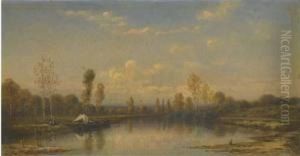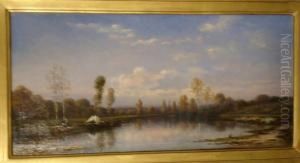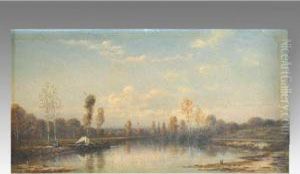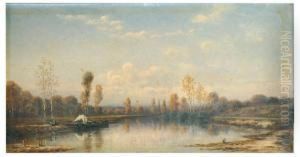Louis-A Adolphe Williot Paintings
Louis-A Adolphe Williot, also known as Adolphe Williot, was a French artist who lived during the 19th century. Born in 1829, Williot’s life spanned an era of significant political, social, and artistic changes in France, including the tumultuous years surrounding the revolutions of 1848 and the establishment of the Second Empire under Napoleon III.
Williot was mainly known for his work as a lithographer and illustrator. Lithography, a printing process that allows for the mass production of images, was a popular medium during the 19th century, particularly for illustrations in books and periodicals. Williot's work often reflected the prevailing artistic trends of his time, including Romanticism, which emphasized emotion and individualism, as well as the later Realist movement, which aimed to depict subjects truthfully without idealization.
Throughout his career, Adolphe Williot contributed to various publications, creating images that captured the spirit of French society and its interests. He worked on illustrations for books, magazines, and possibly contributed to the vibrant culture of prints known as 'lithographic prints,' which were collected and admired by the French public.
Details of Williot’s personal life and training are not widely documented, which is not uncommon for artists who may not have reached the highest echelons of fame. Nonetheless, his work as a lithographer would have required him to be well-versed in the technical aspects of printmaking and to possess a keen eye for detail and composition.
Williot's death occurred in 1890, by which time the art world was on the cusp of experiencing the radical shifts of Modernism. Although Williot may not be as widely recognized as some of his contemporaries, his contributions to the field of lithography and illustration stand as a testament to the rich visual culture of 19th-century France. His works, like those of many other artists of the period, provide valuable insight into the aesthetic preferences and societal norms of his time.



